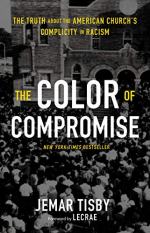
|
| Name: _________________________ | Period: ___________________ |
This test consists of 15 multiple choice questions and 5 short answer questions.
Multiple Choice Questions
1. What led to the split of the Methodist Episcopal Church?
(a) A slave-owning bishop refused to either resign or give up his slaves.
(b) A slave-owning parishioner was excommunicated from the church.
(c) The church congregation argued over a piece of political legislation.
(d) The church congregation disagreed on the question of segregation.
2. Beginning in the 1930s, many Black Americans grew disillusioned with racism in Christian churches. What religion did some Black people turn to?
(a) Islam.
(b) Buddhism.
(c) Taoism.
(d) Judaism.
3. What was the term used for the "the "massive migration of whites to the suburbs" (126) to escape racial integration?
(a) White fright.
(b) White light.
(c) White flight.
(d) White might.
4. What was the practice of blockbusting?
(a) Local residents in white communities refused to sell their homes to Black buyers.
(b) Salespeople used racial fears to persuade white buyers to sell their homes at a loss.
(c) Local organization banded together to harass Black residents who tried to move in.
(d) Salespeople charged lower prices when selling homes to Black buyers.
5. What was Muhammad Ali's real name?
(a) Ronald Frye.
(b) Cassius Clay.
(c) Marcus Garvey.
(d) James Meridith.
6. Why did Linda Browns parents originally want to send her to an all-white school?
(a) They wanted to send her to a boarding school.
(b) The all-white school offered better facilities and teachers.
(c) They wanted to directly oppose racism.
(d) The all-white school didn't charge any fees.
7. What was the term for the system of laws and customs used to control Black people after the Civil War?
(a) Jim Crow laws.
(b) Freedom acts.
(c) Chattel laws.
(d) Slave codes.
8. How many Black people served in the U.S. armed forces during World War I?
(a) About 300,000.
(b) About 200,000.
(c) About 350,000.
(d) About 250,000.
9. What was a side effect of the Fugitive Slave Act?
(a) Black people were prohibited from entering free states.
(b) Slave-oweners lost some of their authority over enslaved people.
(c) Black people could be captured and enslaved, even in free states.
(d) Abolitionist groups received additional funding.
10. What year were was the Gardener Springs Resolutions introduced?
(a) 1859.
(b) 1861.
(c) 1860.
(d) 1858.
11. How did Joseph H. Jackson view Martin Luther King, Jr.'s activities during the civil rights movement?
(a) He considered King a "misguided soul."
(b) He considered King a "pioneer."
(c) He considered King a "hoodlum."
(d) He considered King a "hero."
12. What was the term for the bloody racial conflict that gripped the South during 1919?
(a) The Red Summer.
(b) The Summer of Death.
(c) The Summer of Ruin.
(d) The Bleak Summer.
13. Who was Ida B .Wells?
(a) An antilynching activist.
(b) A Black physician.
(c) A college professor.
(d) An American politician.
14. Where did Emmett Till's murder occur?
(a) Mississippi.
(b) Georgia.
(c) Louisiana.
(d) Alabama.
15. What did Martin Luther King, Jr. see as the best prevention for riots?
(a) Higher education.
(b) Strict laws.
(c) Creative works.
(d) Social justice.
Short Answer Questions
1. During World War I, what role were most Black soldiers assigned?
2. What was the nickname for the state of Kansas during the years leading up to the Civil War?
3. What was the most common cause of death in the Civil War?
4. Which northern city was chosen as the site of Martin Luther King Jr.'s Sothern Christian Leadership Conference?
5. During Billy Graham's 1953 crusade, he encountered segregated seating at a location where he was scheduled to speak. How did he respond?
|
This section contains 588 words (approx. 2 pages at 300 words per page) |

|




